| |
|
|
Botanical Name |
: |
Centella asiatica |
English
Name |
: |
Indian or Water Pennywort, Marsh Penny, Gotu-Kola and Sneezewort |
Synonym(s) |
: |
Hydrocotyle asiatica Linn, Hydrocotyle nummularioidesRich, Hydrocotyle pallida DC.&c. |
Family |
: |
Apiaceae |
| |
General Info
| Description |
 |
|
It is a prostrate, perennial herb. The stem is glabrous, pink and striated, rooting at the nodes. The leaves are fleshy, orbicular-reniform, crenate, base cordate and often lobed and long-petioled. The flowers are red, pink or white, in fascicled umbels. The fruits are oblong, dull brown, laterally compressed; the pericarp hard, thickened, woody and white. |
| Herb Effects |
 |
|
Antiprotozoal, alleviates spasms and sedative (plant); on keratinization and collagen synthesis (stimulates hair and nail growth and provides support for the repair of cartilagen); neutralizes acids in the blood, antiinflammatory, laxative (mild), diuretic, antispasmodic. |
Chemistry
| Active Ingredients |
 |
|
Ascorbic acid, beta-carotene, beta-elemene, niacin, pectin, riboflavin, thiamin(leaf); asiatic acid, asiaticoside, aspartic acid, beta-sitosterol, betulinic acid, brahminoside, brahmoside, glycine, inositol, kaempferol, linoleic acid, oleic acid, palmitic acid, stigmasterol (plant); camphor (essential oil) |
| Chemistry
of Active Ingredients |
 |
|
|
 |
Name |
CAS# |
IUPAC Name |
Formula |
Structure |
 |
|
| Ascorbic acid |
Not Available |
2-(1,2-dihydroxyethy
l)-4,5-dihydroxy-fur
an-3-one |
C6H8O6 |

|
| beta-Carotene |
Not Available |
3,7,12,16-tetramethy
l-1,18-bis(2,6,6-tri
methyl-1-cyclohexeny
l)-octadec
a-1,3,5,
7,9,11,13,15,17-nona
ene |
C40H56 |

|
| Beta-elemene |
33880-83-0 |
1-ethenyl-1-methyl-2
,4-diprop-1-en-2-yl-
cyclohexane |
C15H24 |
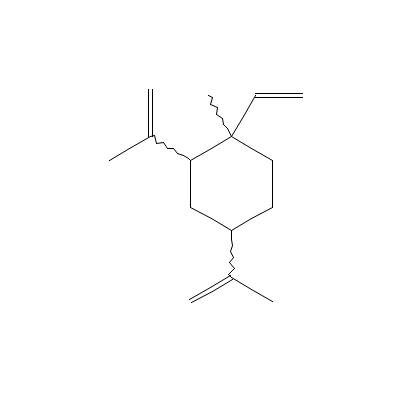
|
| Niacin |
99148-57-9 |
pyridine-3-carboxyli
c acid |
C6H5NO2 |
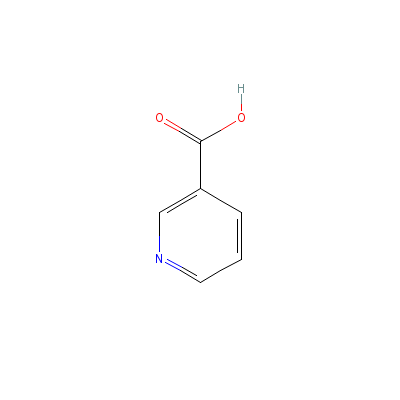
|
| Riboflavin |
Not Available |
Not Available |
C17H21N4O9P |
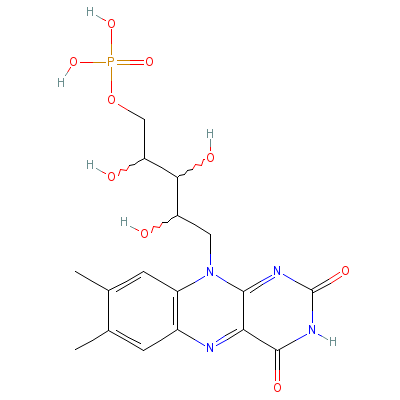
|
| Thiamin |
59-43-8 |
2-[3-[(4-amino-2-met
hyl-pyrimidin-5-yl)m
ethyl]-4-methyl-1-th
ia-3-azoni
acyclope
nta-2,4-dien-5-yl]et
hanol |
C12H17N4OS+ |

|
| Asiatic acid |
Not Available |
(1S,2R,4aS,6aS,6bR,9
R,10R,11R,12aR,14bR)
-10,11-dihydroxy-9-(
hydroxymet
hyl)-1,2
,6a,6b,9,12a-hexamet
hyl-2,3,4,5,6,6a,7,8
,8a,10,11,12,13,14b-
te
tradecahydro-1H-
picene-4a-carboxylic
acid |
C30H48O5 |

|
| Asiaticoside |
Not Available |
[6-[[3,4-dihydroxy-6
-(hydroxymethyl)-5-(
3,4,5-trihydroxy-6-m
ethyl-oxan
-2-yl)ox
y-oxan-2-yl]oxymethy
l]-3,4,5-trihydroxy-
oxan-2-yl]
10,11-dihyd
roxy-9-
(hydroxymethyl)-1,2,
6a,6a,9,12a-hexameth
yl-1,2,3,4,4a,5,6,6b
,7,
8,8a,10,11,12,1
3,14b-hexadecahydrop
icene-4-carboxylate |
C48H78O19 |
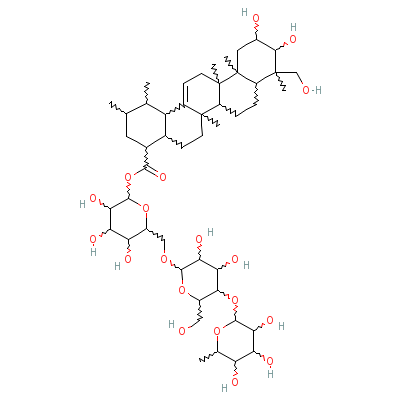
|
| Aspartic acid |
6899-03-2 |
2-aminobutanedioic
acid |
C4H7NO4 |
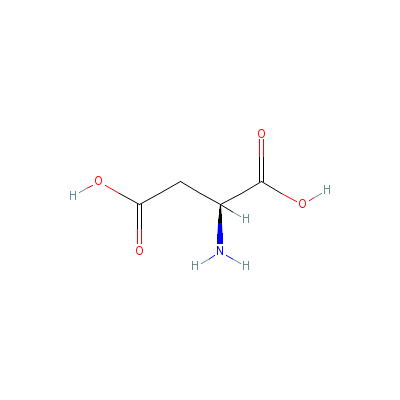
|
| Beta-sitosterol |
5779-62-4 |
17-(5-ethyl-6-methyl
-heptan-2-yl)-10,13-
dimethyl-2,3,4,7,8,9
,11,12,14,
15,16,17
-dodecahydro-1H-cycl
openta[a]phenanthren
-3-ol |
C29H50O |
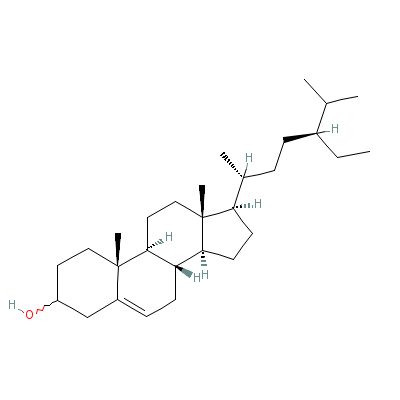
|
| Betulinic Acid |
4481-62-3 |
Not Available |
C30H46O3 |
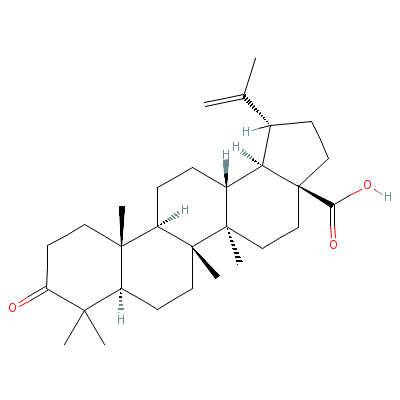
|
| Glycine |
87867-94-5 |
2-aminoacetic acid |
C2H5NO2 |
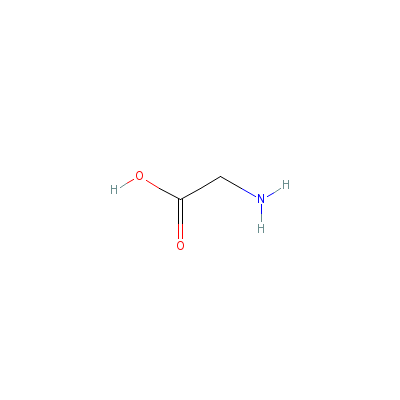
|
| Inositol |
551-72-4 |
cyclohexane-1,2,3,4,
5,6-hexol |
C6H12O6 |
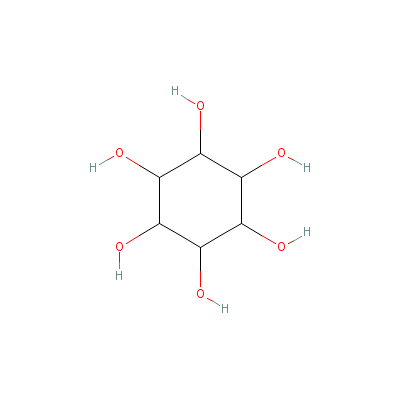
|
| Kaempferol |
80714-53-0 |
3-[3-[4,5-dihydroxy-
6-(hydroxymethyl)-3-
[3,4,5-trihydroxy-6-
(hydroxyme
thyl)oxa
n-2-yl]oxy-oxan-2-yl
]oxy-4,5-dihydroxy-6
-(hydroxymethyl)oxan
-2
-yl]oxy-4,5-dihy
droxy-2-(4-hydroxyph
enyl)-chromen-7-one |
C33H40O21 |
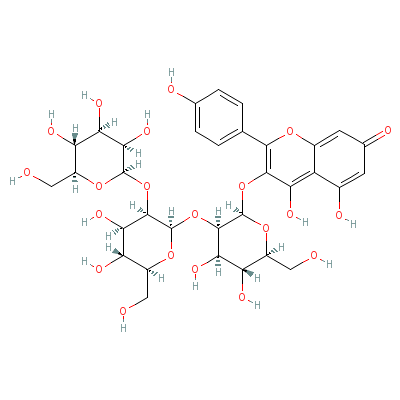
|
| Linoleic acid |
8024-22-4 |
Octadeca-9,12-dienoi
c acid |
C18H32O2 |
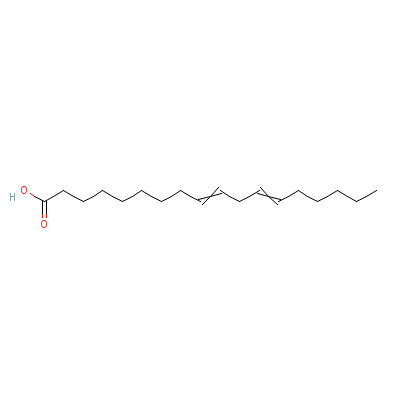
|
| Oleic acid |
8046-01-3 |
Octadec-9-enoic acid |
C18H34O2 |
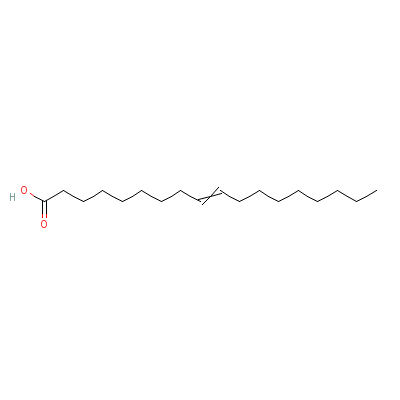
|
| Palmitic acid |
66321-94-6 |
hexadecanoic acid |
C16H32O2 |
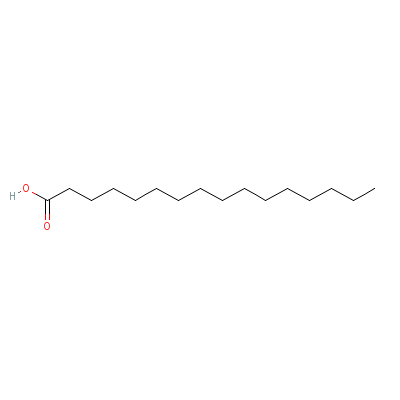
|
| Stigmasterol |
4736-55-4 |
17-(4-ethyl-1,5-dime
thyl-hex-2-enyl)-10,
13-dimethyl-1,2,4,5,
6,7,8,9,10
,11,12,1
3,14,15,16,17-hexade
cahydrocyclopenta[a]
phenanthren-3-one |
C29H48O |
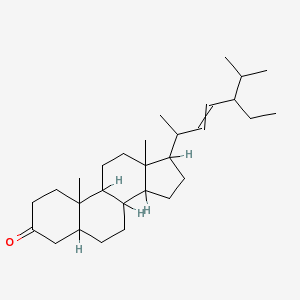
|
| Camphor |
8022-77-3 |
1,7,7-trimethylnorbo
rnan-2-one |
C10H16O |
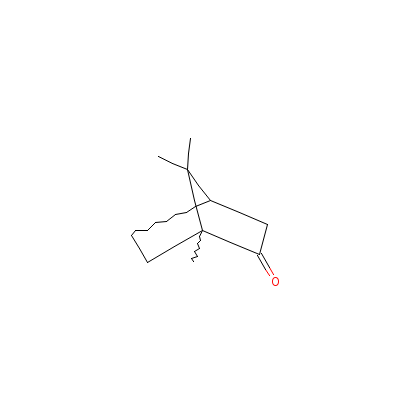
|
|
Pharmacology
| Medicinal Use |
 |
|
For healing wounds (plant extract); in tuberculosis and leprosy (plant decoction); improves intellectual capacity, concentration and memory of children, in skin diseases, asthma, bronchitis, gastric problems, leucorrhea, catarrh, as an antidote in cholera; on boils and tumours (plant paste); to cure severe headache, to prevent and cure urinary tract infections and the growth of kidney stones (leaf juice). |
| Contraindication |
 |
|
The raw leaf juice should be consumed in small doses. since it is very potent and an excess may lead to coma.
Nausea has been reported at very high levels of intake.
It should not be taken internally as a supplement by children under 4 or breast-feeding / pregnant mothers. People taking sedatives should also not use centella as a supplement. |
| Reference |
 |
|
 Chandel et al., Biodiversity in Medicinal and Aromatic Plants in India. Chandel et al., Biodiversity in Medicinal and Aromatic Plants in India.
Johnson T. CRC Ethnobotany Desk Reference (www.herbweb.com/herbage).
Uniyal et al., Medicinal Flora of Garhwal Himalayas. |
Dealers
Products
|
|